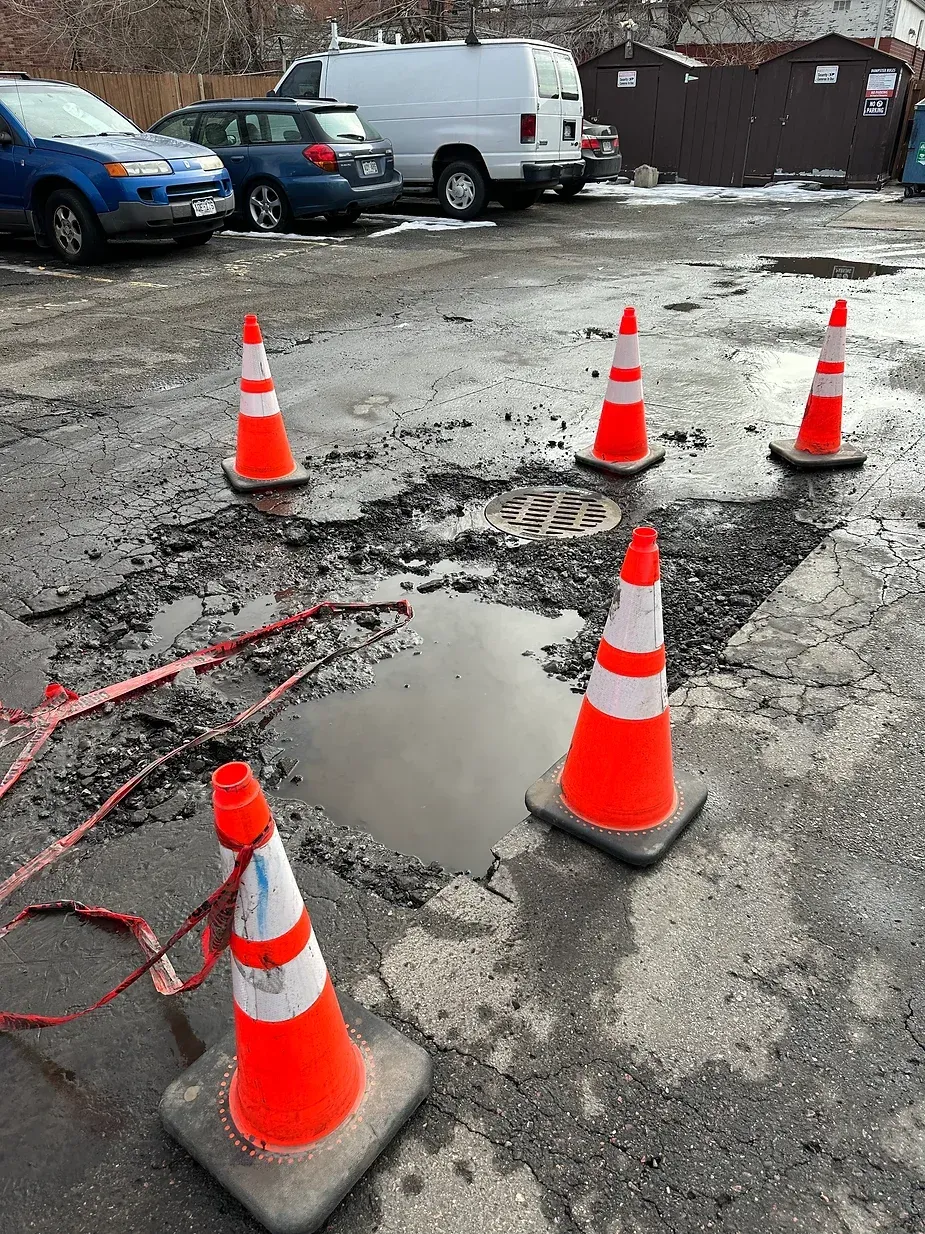
What Causes Asphalt Potholes?
Potholes in asphalt roads stem from weathering, water damage, heavy traffic, poor installation, aging, and chemical exposure. Extreme weather fluctuations cause the asphalt to expand and contract, leading to cracks that eventually become potholes. Water infiltration weakens the pavement's structure, while heavy vehicles exacerbate existing cracks.
Poor initial installation or substandard materials can create weak spots prone to potholes. As asphalt ages, it naturally deteriorates from traffic and environmental exposure, increasing vulnerability. Additionally, exposure to chemicals like salt and oil accelerates degradation. Understanding these factors is crucial for implementing preventive maintenance strategies and ensuring the durability of asphalt surfaces.

Introduction to Asphalt Potholes
Potholes are depressions or cavities that form on asphalt surfaces. They are typically characterized by a combination of wear and tear, environmental factors, and poor maintenance practices. They often start as small cracks but can quickly escalate into larger holes, especially in regions with extreme weather conditions.
Understanding Asphalt Composition
Components of Asphalt
Asphalt is composed of aggregates, binder, and filler materials. The aggregates provide strength, while the binder, usually bitumen, holds the mixture together. Fillers enhance the mixture's properties and improve its resistance to water penetration.
How Asphalt is Laid
Asphalt is laid in layers during road construction and compacted to form a smooth surface. Proper installation techniques are essential to ensure the pavement's longevity.
Environmental Factors Leading to Potholes
Effects of Temperature Changes
Extreme temperature fluctuations can cause asphalt to expand and contract, leading to cracks and fissures. This phenomenon is particularly pronounced in regions with hot summers and cold winters.
Impact of Water Accumulation
Water is asphalt's primary enemy. When it penetrates the surface, it weakens the binder and erodes the underlying layers, eventually causing potholes to form.
Traffic and Wear and Tear
Effect of Heavy Vehicles
Heavy vehicles exert immense pressure on asphalt surfaces, accelerating wear and causing cracks and depressions.
Frequency of Traffic
High-traffic areas experience more wear and tear, increasing the likelihood of pothole formation. Constant vehicle movement exacerbates existing cracks and weakens the pavement over time.
Poor Maintenance Practices
Lack of Regular Inspection
Failure to conduct regular inspections makes small issues escalate into more significant problems. Early detection and timely repairs are crucial for preventing potholes.
Importance of Timely Repairs
Ignoring minor cracks and potholes only allows them to worsen. Prompt repairs extend the pavement's lifespan and reduce maintenance costs in the long run.
Chemical Damage to Asphalt
Effects of Chemicals on Asphalt
Certain chemicals, such as oil and gasoline, can degrade asphalt surfaces, weakening the binder and accelerating deterioration.
Common Chemical Culprits
Spills from vehicles and industrial activities introduce harmful chemicals onto road surfaces, contributing to the formation of potholes.
Tree Roots and Underground Infrastructure
How Roots Cause Damage
Tree roots can penetrate asphalt surfaces, causing them to buckle and crack. Additionally, underground utilities and infrastructure may shift over time, leading to pavement deformations.
Preventive Measures
Installing root barriers and conducting regular inspections of underground infrastructure can help mitigate the risk of damage to asphalt surfaces.
Quality of Asphalt Materials
Impact of Substandard Materials: Using inferior-quality materials during construction compromises the durability of the pavement, making it more susceptible to damage.
Choosing the Right Asphalt Mix: Selecting the appropriate asphalt mix for specific environmental conditions and traffic loads is essential for ensuring the pavement's longevity.
Construction Defects
Compaction Issues: Improper compaction during construction can result in uneven surfaces and structural weaknesses, making the pavement more prone to potholes.
Problems with Drainage Systems: Inadequate drainage can lead to water accumulation, exacerbating the deterioration of asphalt surfaces and hastening pothole formation.
Effects of Freeze-Thaw Cycles
How Freeze-Thaw Cycles Cause Damage: In regions with cold climates, water that seeps into pavement cracks can freeze and expand, widening existing fissures and creating new ones.
Preventive Measures: Proper drainage systems and regular maintenance help minimize the impact of freeze-thaw cycles on asphalt surfaces.
Aging of Asphalt
Effects of Age on Asphalt: Asphalt surfaces deteriorate with age, losing flexibility and resilience. Over time, this degradation leads to the formation of cracks and potholes.
When to Consider Resurfacing: Monitoring the condition of asphalt surfaces and scheduling resurfacing projects as needed helps prevent extensive damage and prolongs the pavement's lifespan.
Role of Poor Soil Conditions
Soil Types and Their Impact: Different soil types have varying levels of compaction and drainage capabilities, which can affect the stability of asphalt surfaces.
Mitigating Soil-related Issues: Addressing soil-related issues through proper site preparation and drainage solutions is essential for preventing potholes and other pavement defects.
Conclusion
In conclusion, asphalt potholes can result from environmental factors, traffic conditions, poor maintenance practices, and construction defects. Preventing their formation requires proactive measures, including regular inspections, timely repairs, and proper drainage systems. By understanding the causes of potholes and implementing preventive strategies, communities can ensure safer and more durable road infrastructure for all users.
FAQs
Why do potholes seem to appear suddenly?
Potholes often develop gradually, starting as small cracks that worsen over time. However, they may appear to emerge suddenly after heavy rainfall or temperature changes accelerate their formation.
Can potholes be repaired permanently?
While temporary patches can address immediate safety concerns, permanent pothole repairs typically involve removing the damaged asphalt and replacing it with fresh material. However, regular maintenance is still necessary to prevent new potholes from forming.
What role do drivers play in preventing potholes?
Drivers can help minimize the formation of potholes by avoiding sudden stops and sharp turns, which can contribute to pavement deterioration. Reporting potholes to relevant authorities also facilitates timely repairs.
Are there any innovative technologies for pothole detection and repair?
Technological advancements have led to the development of various tools and techniques for detecting and repairing potholes more efficiently, such as infrared asphalt repair and automated pothole detection systems.
How can communities prioritize pothole repairs with limited resources?
Prioritizing pothole repairs based on traffic volume, location, and damage severity helps maximize the impact of available resources and ensure that critical areas are addressed promptly.